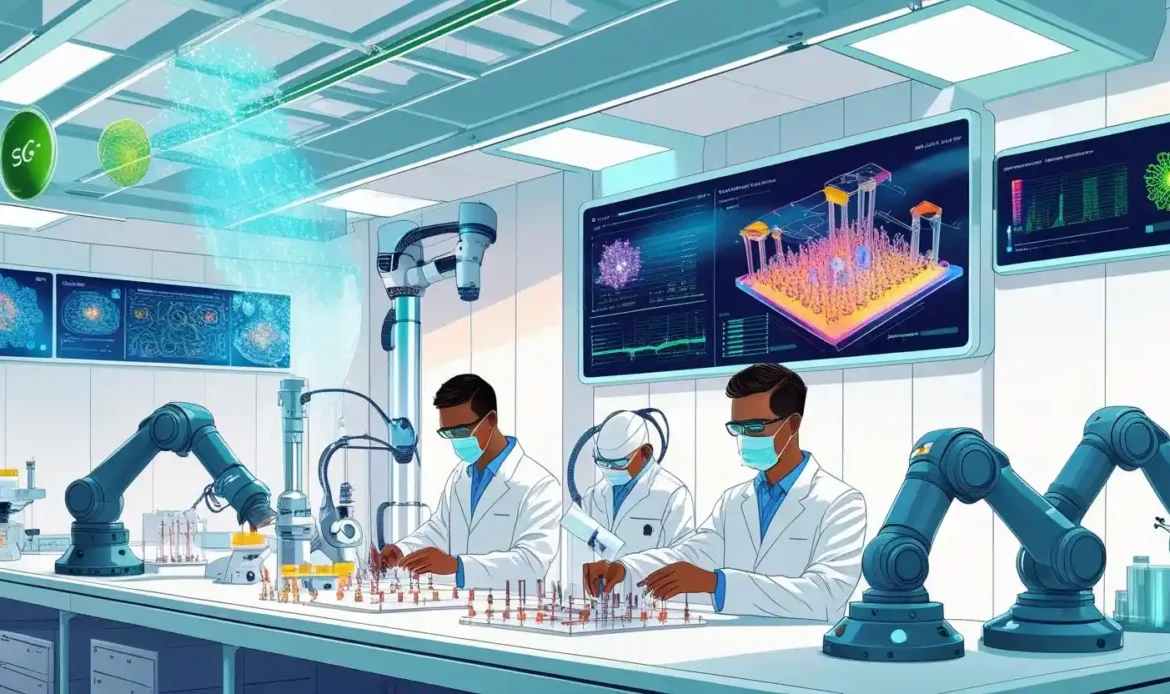[Bethany, Connecticut | August 15, 2025] — Brightpath Associates, a leader in executive search recruitment for advanced technology industries, today announced the release of its in-depth guide, Future of Nanotechnology Sensors: Applications and Trends. The report highlights the transformative role of nanotechnology innovation in sensor technology and the growing need for visionary leadership to harness its potential across healthcare, aerospace, automotive, and sustainability sectors.
With nanotechnology AI, machine learning, and data analytics converging, sensors are becoming smaller, smarter, and exponentially more capable. These advancements are enabling real-time monitoring, predictive analysis, and ultra-precise detection—capabilities that were science fiction only a decade ago. Brightpath Associates’ guide examines the technological, regulatory, and leadership dynamics driving this evolution, while offering practical insights for C-suite executives navigating this fast-changing landscape.
“We are witnessing a fundamental shift in how the world measures and understands its environment,” said a Brightpath Associates spokesperson. “Nanotechnology sensors, powered by AI and advanced modeling, are opening possibilities in healthcare diagnostics, environmental protection, aerospace safety, and more. But to fully unlock these opportunities, companies must pair innovation with strong, forward-thinking leadership.”
Nanotechnology Innovation Meets AI and Machine Learning
According to the report, combining nanotechnology with AI and machine learning is revolutionizing the sensor industry. In nanotechnology healthcare, nano-sensors can detect disease biomarkers at extremely low concentrations—potentially allowing cancer or diabetes diagnosis before symptoms appear. In environmental applications, AI-driven nano-sensors can analyze air quality in real time and forecast pollution trends.
Advances in nanotechnology simulation and modeling are accelerating R&D by enabling scientists to test designs virtually before building physical prototypes. This approach reduces development costs, shortens time to market, and allows sensors to be customized for rapidly changing conditions.
Emerging Applications and Market Opportunities
The guide outlines key sectors poised for disruption by nanotechnology sensors:
- Healthcare Innovation: Early disease detection, targeted drug delivery, and continuous patient monitoring.
- Automotive Safety: Enhanced collision detection and environmental monitoring for connected vehicles.
- Aerospace Reliability: Structural health monitoring to prevent in-flight failures and improve navigation systems.
- Consumer Electronics: Smaller, energy-efficient devices with advanced sensing capabilities.
- Sustainable Solutions: Nanotechnology sustainability applications, such as precision agriculture, energy efficiency monitoring, and real-time environmental tracking.
With global investment in nanotechnology sensors surging, the focus is increasingly on sustainability—designing devices that minimize environmental impact while maximizing efficiency.
Challenges: Risk Assessment, IP Protection, and Leadership Gaps
The report stresses that growth in the sector is not without hurdles. Nanotechnology risk assessment remains critical, as the long-term health, safety, and environmental impacts of new materials must be carefully evaluated. Regulatory compliance will play a decisive role in public adoption and investor confidence.
Nanotechnology IP protection is another pressing challenge. With innovations emerging rapidly, safeguarding intellectual property is essential for maintaining a competitive edge.
Brightpath Associates emphasizes that addressing these challenges requires strong leadership—leaders who understand both the science and the strategy. Through specialized executive search recruitment, the firm connects organizations with executives capable of guiding R&D investment, navigating regulatory landscapes, and implementing commercialization strategies.
“Innovation is only as effective as the leadership behind it,” the spokesperson added. “The companies that will lead the future of nanotechnology are those that combine breakthrough science with executives who can anticipate risks, secure intellectual property, and drive market adoption.”
Sustainability and Strategic Outlook
The future of nanotechnology innovation lies in aligning cutting-edge capabilities with sustainability goals. From air quality monitoring in urban centers to optimizing resource use in agriculture, nano-sensors are emerging as a vital tool for creating environmentally responsible solutions.
For C-suite leaders, the takeaway is clear: seize the moment to invest in nanotechnology AI, strengthen nanotechnology modeling and simulation capabilities, and secure top-tier leadership talent. By doing so, companies can position themselves at the forefront of a market projected to grow exponentially over the next decade.
About Brightpath Associates
Brightpath Associates is a premier recruitment and talent acquisition firm serving over 34 industries, including advanced technology, nanotechnology, aerospace, and healthcare. With over 50 years of combined experience, Brightpath specializes in executive search recruitment, delivering leaders who drive innovation and growth. The firm’s mission is to empower organizations with visionary talent capable of navigating complex industry challenges.
Media Contact:
Name: Corporate Communications Team
Company: BrightPath Associates
Email: media@brightpathassociates.com
Website: https://brightpathassociates.com

